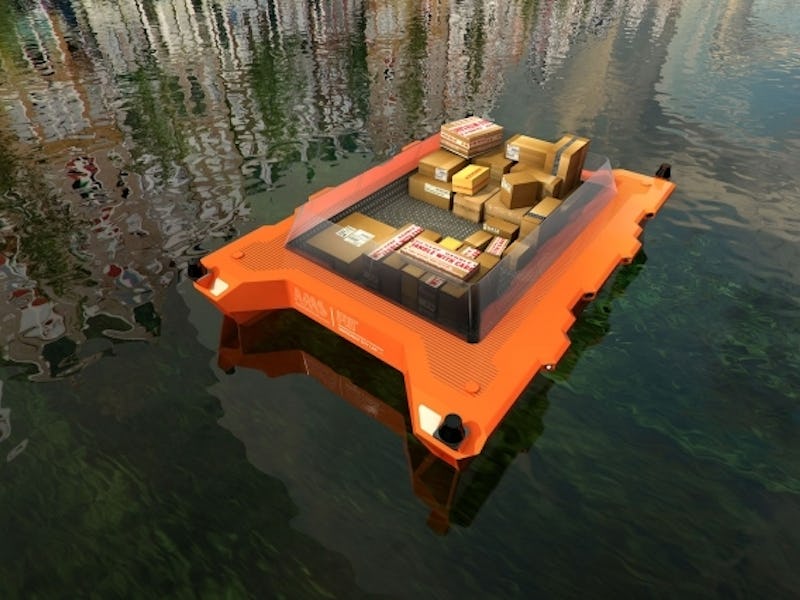Drone boats will soon hit the famous, rusty bike-filled canals of Amsterdam. The ambitious “ROBOAT” project, a collaboration between the Massachusetts Institute of Technology (MIT) and the Amsterdam Institute for Advanced Metropolitan Solutions (AMS), will start a five-year trial of the vessels from 2017 to give the multi-purpose boats all sorts of interesting tasks for the busy waterways.
“This project imagines a fleet of autonomous boats for the transportation of goods and people that can also cooperate to produce temporary floating infrastructure, such as on-demand bridges or stages that can be assembled or disassembled in a matter of hours,” says Carlo Ratti, professor of the practice of urban technologies at MIT.
So yes, in addition to transporting goods and people, these drone boats could be used to create temporary floating infrastructures, such as self-assembling bridges and concert stages.
A ROBOT bridge.
If the trial doesn’t sink, there’s no shortage of other waterways on which the ROBOATS could be put to work. The team claims that 60 percent of the world’s population lives near coasts and riverbanks. Automating in this area could have a big impact on scientific research and local infrastructure. Amsterdam is an ideal initial test subject: almost 25 percent of the city is covered in water, and its network of canals harken back to the days when commerce was conducted primarily through the waterways.
A ROBOAT
The boats will support an array of sensors that can measure water pollution and quality, making assessments about how best to improve the environment. “Water is the bearer of life,” says Arjan van Timmeren, professor and scientific director at AMS. “By focusing on the water system of the city, ROBOAT can create opportunities for new environmental sensing methods and climate adaptation.”
MIT’s boats won’t be the first autonomous vessels to hit water, but they may be one of the most high-profile. Saildrone, a startup working with the National Oceanic and Atmospheric Administration in the United States, has developed autonomous boats that can stay out at sea, fitted out with sensors so scientists on shore can analyze weather pattern data.
The boats aren’t designed for public use, and it’s unlikely that many people will ever see them up-close.
A cross section of the ROBOAT.
